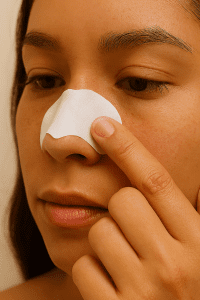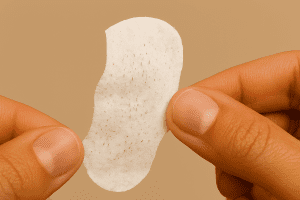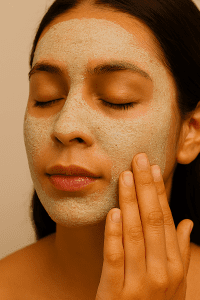
Pore strips are one of the most popular quick-fix skincare products on the market. You’ve probably seen them in drugstores, skincare hauls, or viral TikTok videos — those little adhesive patches that promise to yank blackheads out of your pores in minutes. But the question remains: do pore strips really work, or are they just a temporary thrill?
In this guide, we’ll break down how pore strips function, what they actually remove, and whether they’re worth adding to your skincare routine. Plus, we’ll explore safer, more effective alternatives for long-term pore care.
🧠 What Are Pore Strips?
Pore strips are adhesive-backed patches designed to stick to the skin — usually the nose, chin, or forehead — and pull out debris from clogged pores. They’re made with polymers that harden slightly when dry, allowing them to grip onto surface-level blackheads and dead skin.
In theory, they offer instant gratification. In practice, their results are more complicated.
🧪 What Do Pore Strips Actually Remove?

When you peel off a pore strip, you’ll often see tiny plugs of sebum, dead skin, and dirt. These are open comedones, commonly known as blackheads. However, pore strips only remove the top portion of the clog — not the root.
Moreover, they don’t shrink pores or prevent future blackheads. The pore remains open and can refill quickly if not treated with exfoliants or oil-regulating products.
⚠️ Pros and Cons of Pore Strips
✅ Pros:
- Instant visual results
- Easy to use
- Affordable and widely available
- Satisfying for surface-level blackheads
❌ Cons:
- Results are temporary
- Can irritate sensitive skin
- May damage skin barrier if overused
- Don’t treat the root cause of clogged pores
In addition, pore strips can cause redness or broken capillaries if pulled too aggressively.
🧴 Safer Alternatives to Pore Strips
If you’re looking for long-term blackhead control, consider these options:
1. Salicylic Acid (BHA)
Penetrates deep into pores to dissolve oil and debris. Use 2–3 times per week.
2. Clay Masks
Absorb excess oil and tighten pores. Great for oily and acne-prone skin.
3. Retinoids
Increase cell turnover and prevent clogged pores. Start with a low dose and build up.
4. Gentle Exfoliation
Use chemical exfoliants like glycolic acid or lactic acid to remove dead skin cells.
Recommended Products:
- Paula’s Choice Skin Perfecting 2% BHA Liquid
- The Ordinary Salicylic Acid 2% Solution
- Aztec Secret Indian Healing Clay
- Differin Gel (Adapalene)
🧖♀️ How to Unclog Pores Naturally

Step-by-Step Routine:
- Cleanse twice daily with a gentle, non-comedogenic cleanser
- Steam your face once a week to open pores
- Apply a clay mask to absorb oil and impurities
- Use salicylic acid to exfoliate inside the pore
- Moisturize with a lightweight, oil-free formula
- Protect with SPF to prevent UV damage and inflammation
As a result, your pores stay clearer and tighter over time — without the trauma of ripping off a strip.
🧑⚕️ What Dermatologists Say
Most dermatologists agree: pore strips are fine for occasional use, but they’re not a long-term solution. They don’t treat the underlying causes of blackheads, and they can irritate skin if used too frequently.
If you have:
- Persistent blackheads
- Enlarged pores
- Sensitive or reactive skin
…it’s best to skip pore strips and opt for professional treatments like chemical peels, microdermabrasion, or prescription retinoids.
So, do pore strips really work? Yes — but only on a surface level. They offer a quick fix and visual satisfaction, but they don’t solve the deeper issue of clogged pores. For lasting results, build a skincare routine that includes exfoliation, oil control, and hydration.
And remember: clear skin is a journey, not a one-strip miracle. Treat your pores with care, and they’ll reward you with clarity and confidence.
💡 SEO Keywords Used Naturally: do pore strips really work, remove blackheads safely, pore strip effectiveness, skincare for oily skin, unclog pores naturally, salicylic acid, clay mask for blackheads

Leave a Reply